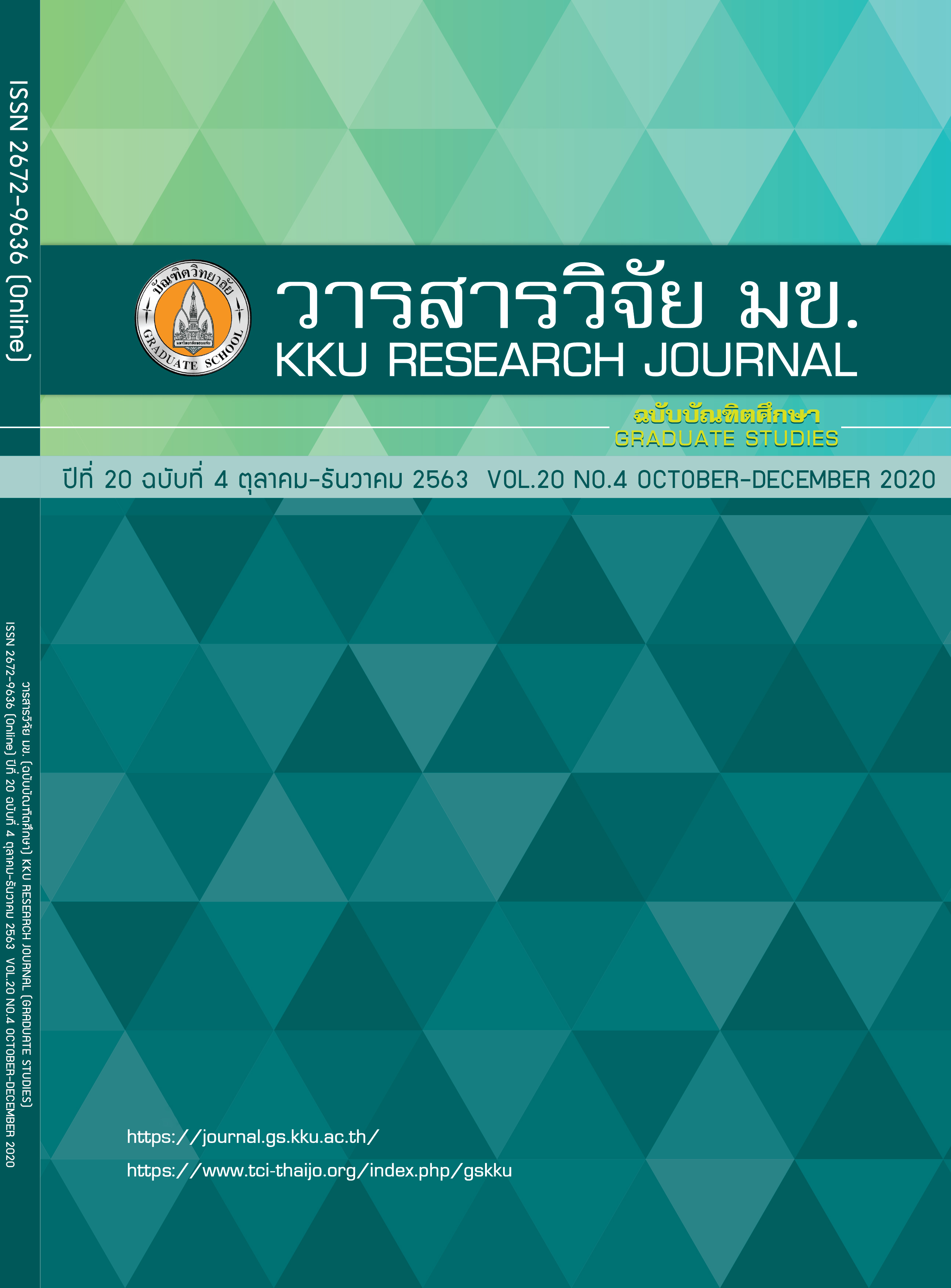Degradation of Triclocarban in Water by Fenton- like Reaction
Keywords:
Fenton-like reaction, Triclocarban, Iron-powderAbstract
The objective of this study was to the feasibility for Triclocarban degradation using Fenton-like process. The effects of hydrogen peroxide concentration, and initial pH of solution were investigated. The initial concentration of triclocarban, the reaction time were kept constant and catalyst loading (iron-powder) of 40 ppm, 240 min and 1.6 g L-1, respectively. Optimal conditions were determined to be pH 7, hydrogen peroxide 50 mM, triclocarban 40 ppm . The optimal pH was found to be 7 and triclocarban degradation efficiency removal was 78% within 240 min. These promising results clearly demonstrate the potential of the heterogeneous Fenton-like process for the effective degradation of triclocarban by iron-powder. The kinetic analysis implied that the reaction followed pseudo first order kinetics. It’ s apparent rate constant is calculated to be 3.8 × 10-3 min-1.
References
Sirés I, Oturan N, Oturan MA, Rodríguez RM, Garrido JA, Brillas E. Electro-Fenton degradation of antimicrobials triclosan and triclocarban. Electrochim Acta. 2007;52(17):5493–5503.
Tizaoui C, Grima N, Hilal N. Degradation of the antimicrobial triclocarban (TCC) with ozone. Chem Eng Process Process Intensif. 2011;50(7):637–643.
Mulla SI, Hu A, Wang Y, Sun Q, Huang SL, Wang H, et al. Degradation of triclocarban by a triclosan-degrading Sphingomonas sp. strain YL-JM2C. Chemosphere. 2016;144:292–296.
Devi LG, Raju KSA, Kumar SG, Rajashekhar KE. Photo-degradation of di azo dye Bismarck Brown by advanced photo-Fenton process: Influence of inorganic anions and evaluation of recycling efficiency of iron powder. J Taiwan Inst Chem Eng. 2011;42(2):341–349.
Khataee A, Salahpour F, Fathinia M, Seyyedi B, Vahid B. Iron rich laterite soil with mesoporous structure for heterogeneous Fenton-like degradation of an azo dye under visible light. J Ind Eng Chem. 2015;26:129–135.
Liu Y, Zhang G, Chong S, Zhang N, Chang H, Huang T, et al. NiFe(C2O4)x as a heterogeneous Fenton catalyst for removal of methyl orange. J Environ Manage. 2017;192:150–155.
Srikhao N, Pilahom K, Nisapi W, Neramittagapong S, Neramittagapong A. Optimization of Decolorization (Somnauk’s Red Dye No. 9) Using Fenton-Like Reaction Over Iron Powder by Box-Behnken Design (BBD). Kku Res J. 2018;18(4):12–26.
Kongphonpan M, Nisapi W, Neramittagapong S, Neramittagapong A. Degradation of diazinon using Fenton-like reaction over iron base catalyst. 2019;(June):1–13.
Huang X, Niu Y, Hu W. Fe/Fe3C nanoparticles loaded on Fe/N-doped graphene as an efficient heterogeneous Fenton catalyst for degradation of organic pollutants. Colloids Surfaces A Physicochem Eng Asp. 2017;518: 145–150.
Fida H, Zhang G, Guo S, Naeem A. Heterogeneous Fenton degradation of organic dyes in batch and fixed bed using La-Fe montmorillonite as catalyst. J Colloid Interface Sci. 2017;490:859–868.
Youssef NA, Shaban SA, Ibrahim FA, Mahmoud AS. Degradation of methyl orange using Fenton catalytic reaction. Egypt J Pet. 2016;25(3):317–321.
Wang J, Sun Y, Feng J, Xin L, Ma J. Degradation of triclocarban in water by dielectric barrier discharge plasma combined with TiO2/activated carbon fibers: Effect of operating parameters and byproducts identification. Chem Eng J. 2016;300:36–46.
Gao M, Zhang D, Li W, Chang J, Lin Q, Xu D, et al. Degradation of methylene blue in a heterogeneous Fenton reaction catalyzed by chitosan crosslinked ferrous complex. J Taiwan Inst Chem Eng. 2016;67:355–361.



